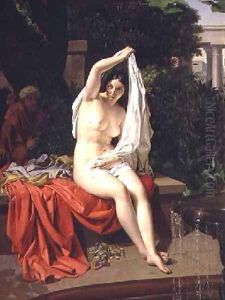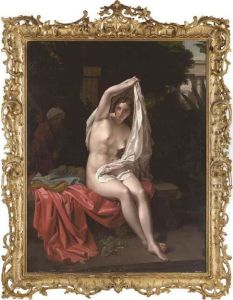Grigori Ignat'evich Lapchenko Paintings
Grigori Ignat'evich Lapchenko, born in 1909 in the Russian Empire and passing away in 1990, was a notable Soviet Ukrainian painter whose contributions to art spanned across several decades of the 20th century. Lapchenko's artistic journey began in an era marked by dramatic shifts in political, social, and cultural landscapes within the Soviet Union, particularly affecting Ukraine. His works reflect a deep engagement with the evolving styles and ideological demands of Soviet art, navigating through periods of Socialist Realism, and incorporating elements of impressionism and post-impressionism.
Lapchenko's education and early career were significantly influenced by the artistic environment of the time, which saw a push towards realism underpinned by socialist ideals. He studied at the Kiev Art Institute, a pivotal institution in shaping the future artists of the Soviet Union, where he was immersed in the rigorous study of both classical and contemporary art. His exposure to various artistic movements, combined with his unique talent, allowed him to develop a distinctive style that was both reflective of Soviet artistic mandates and deeply personal.
Throughout his career, Lapchenko was known for his landscapes and portraits, which often depicted the Ukrainian countryside and its inhabitants with a sensitivity to light, color, and form that imbued his subjects with a sense of dignity and beauty. His work not only celebrated the aesthetic value of the Ukrainian landscape but also served as a testament to the resilience and spirit of its people during times of hardship and change.
Despite the challenges posed by the political climate, including periods of severe artistic restrictions and the demand for a strictly utilitarian form of art, Lapchenko managed to navigate his career with a degree of independence that allowed his art to evolve. He participated in numerous exhibitions, both in the Soviet Union and abroad, earning recognition and accolades for his contributions to Soviet Ukrainian art.
Lapchenko's legacy is a reflection of his ability to capture the essence of his time while maintaining a unique artistic voice. His paintings remain a valuable part of Ukraine's cultural heritage, offering insights into the complex interplay between art, identity, and politics in the Soviet era. His death in 1990 marked the end of a significant chapter in Soviet art history, but his works continue to inspire and resonate with both art enthusiasts and historians alike.

